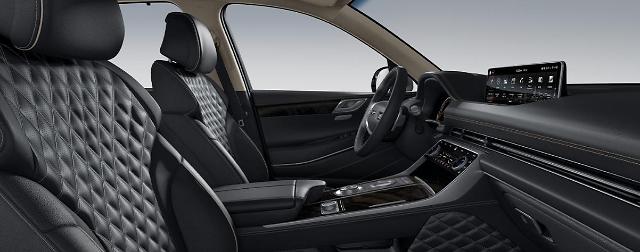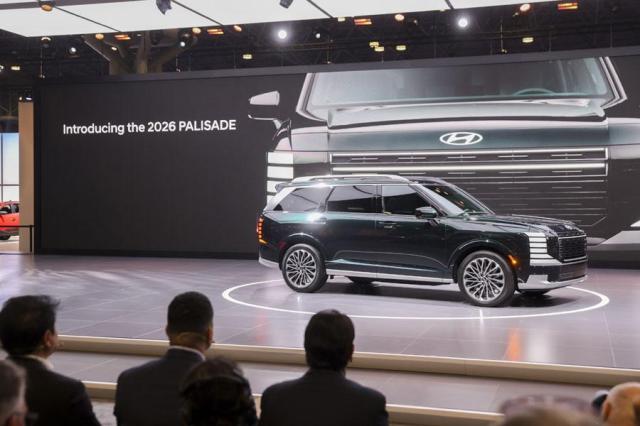
[Courtesy of Hyundai Motor]
GV80 went on sale on Wednesday after a ceremony at a convention center in Goyang, a northwestern satellite city of Seoul. The price ranges from 65.8 million won ($56,724) to more than 80 million won, depending on self-designed options. Hyundai will release two other models, 2.5-liter gasoline and 3.5-liter turbo.
"Based on differentiated design and state-of-the-art technology, we have used new safety and convenience specifications," Hyundai Motor CEO Lee Won-hee said. "We will focus on customer needs and create our own design, quality and service."
GV80, based on rear-wheel drive, is equipped with a preview electronic control suspension system capable of detecting road conditions with cameras and navigation information as well as a rough road driving mode. It has a maximum output of 278 horsepower and a fuel efficiency of 11.8 kilometers (7.3 miles) per liter.
Hyundai described its new luxury SUV as the lightest in its class. Aluminum lightweight materials were used for doors and hoods to reduce weight. The cabin room is quiet with active road noise reduction technology, which produces negative sound waves after analyzing noise coming from the road in real time.

[Courtesy of Hyundai Motor]
Other convenience features include a stretching mode by controlling seven air pockets individually in the driver's seat and an air-clean mode which operates automatically depending on the indoor air quality.
The front shows a crest grill and four quad-lamps reminiscent of a shield. The interior is neatly designed. The number of center operation buttons has decreased.
GV80 is installed with upgraded self-driving technology that allows the car to respond effectively to intruding vehicles even when it is stuck at a speed of less than 20 kilometers per hour. Smart cruise control was applied for the first time in the world, allowing cars to learn the driving characteristics of drivers and implement autonomous driving.
There are 10 airbags that control the pressure to unfold depending on the amount of impact in a collision, and the front seat central airbags reduce injuries caused by collisions between occupants in a side impact. Augmented Reality (AR) navigation allows users to easily find their way by putting virtual guiding lines on top of actual driving images.
A simple in-car payment service allows users to pay through a navigation screen without taking their wallets out of gas stations or parking lots. An integrated controller recognizes hard writing, so it is possible to set up a destination by hand. There is also a function to check the status of a vehicle with smartphones when drivers are far away.
Copyright ⓒ Aju Press All rights reserved.




View more comments